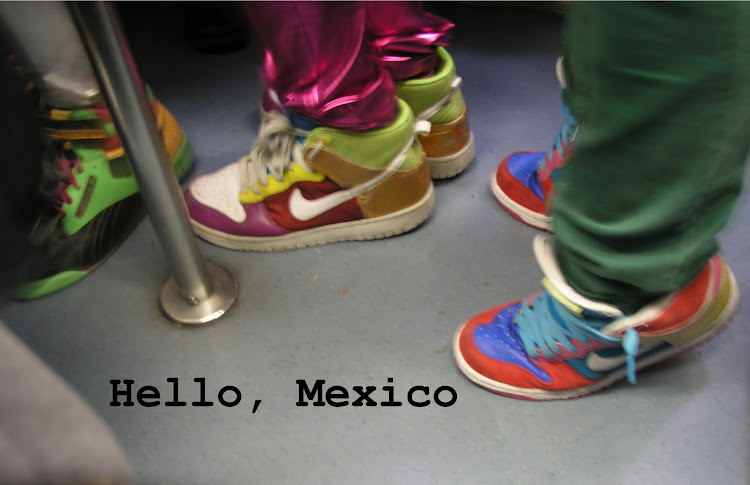 Trajinera jam in Xochimilco.
Trajinera jam in Xochimilco.Yesterday, Ahmed, John, Allen and me went to
Xochimilco (Zoe-chee-milk-oh), a system of canals Mexico City’s southern borough by the same name. You rent a
trajinera (tra-he-nair-uh), or a large, flat canoe, and a
trajinero weaves you through the shallow canals, pushing you along with a 15-foot wood pole. Sundays it’s always packed, with hundreds of
trajineras filled with families, beers, music and food. Vendors on their own mini-trajineras abound, selling everything from (imitation Chinese) Mexican artisans, corn on the cob,
micheladas, flower bouquets, and every imaginable type of antojito (snacks, like tacos, empanadas or quesadillas). And there are plenty of mariachi, norteño, marimba and banda groups who will hop aboard your
trajinera and play you a few songs.
We got to Xochimilco late and ended up going on the floating-party “Paseo turistico” (tourist route), which most people go on. Last time we went on the more relaxed “Paseo ecológico” (ecological route), which takes you through the tourist route, but then you go through a beautiful reserve. Toward the end is a kitschy but cool “
Isla de las muñecas” (Island of the Dolls), where dolls and parts of dolls are nailed to trees. The island has a creepy history, definitely worth the 10 pesos.
I recommend Xochi’s ecological route to anyone visiting Mexico City. It’s a little far from the main tourist areas, but it’s a relaxing escape from the smoggy, noisy city. You need about five hours for that route, and make sure you don’t get
ripped off !!
Bowl-shaped Mexico City used to be a large lake, but after Spanish colonization most of it was drained out. Xochi is what survived, and it's a good way to see what Mexico City was like, más o menos.
The highlight of our day, though, was buying plants at one of Xochi's many nurseries. They grow easily on Xochimilco’s
chinampas (“floating gardens”), and we took home a pine tree, gardenias, ferns, geraniums, and a bunch of others whose names I forget.
Living on traffic-heavy Insurgentes Avenue, having plants is a must. They create much-needed humidity, provide oxygen where car exhaust abounds, filter the air and make your place more pleasant to look at. And with plenty of sun (at least for half the year) in MxC, they thrive.
photos from yesterday (paseo turístico); photos from last June (paseo ecologico)







